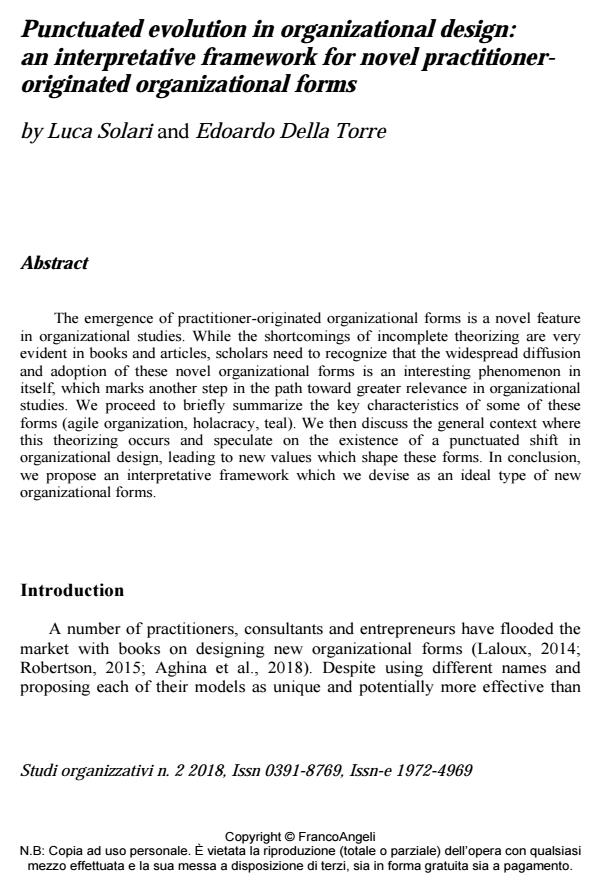Punctuated evolution in organizational design: an interpretative framework for novel practitioneroriginated organizational forms
Journal title STUDI ORGANIZZATIVI
Author/s Luca Solari, Edoardo Della Torre
Publishing Year 2019 Issue 2018/2
Language English Pages 26 P. 177-202 File size 272 KB
DOI 10.3280/SO2018-002008
DOI is like a bar code for intellectual property: to have more infomation
click here
Below, you can see the article first page
If you want to buy this article in PDF format, you can do it, following the instructions to buy download credits

FrancoAngeli is member of Publishers International Linking Association, Inc (PILA), a not-for-profit association which run the CrossRef service enabling links to and from online scholarly content.
The emergence of practitioner-originated organizational forms is a novel feature in organizational studies. While the shortcomings of incomplete theorizing are very evident in books and articles, scholars need to recognize that the widespread diffusion and adoption of these novel organizational forms is an interesting phenomenon in itself, which marks another step in the path toward greater relevance in organizational studies. We proceed to briefly summarize the key characteristics of some of these forms (agile organization, holacracy, teal). We then discuss the general context where this theorizing occurs and speculate on the existence of a punctuated shift in organizational design, leading to new values which shape these forms. In conclusion, we propose an interpretative framework which we devise as an ideal type of new organizational forms.
Luca Solari, Edoardo Della Torre, Punctuated evolution in organizational design: an interpretative framework for novel practitioneroriginated organizational forms in "STUDI ORGANIZZATIVI " 2/2018, pp 177-202, DOI: 10.3280/SO2018-002008